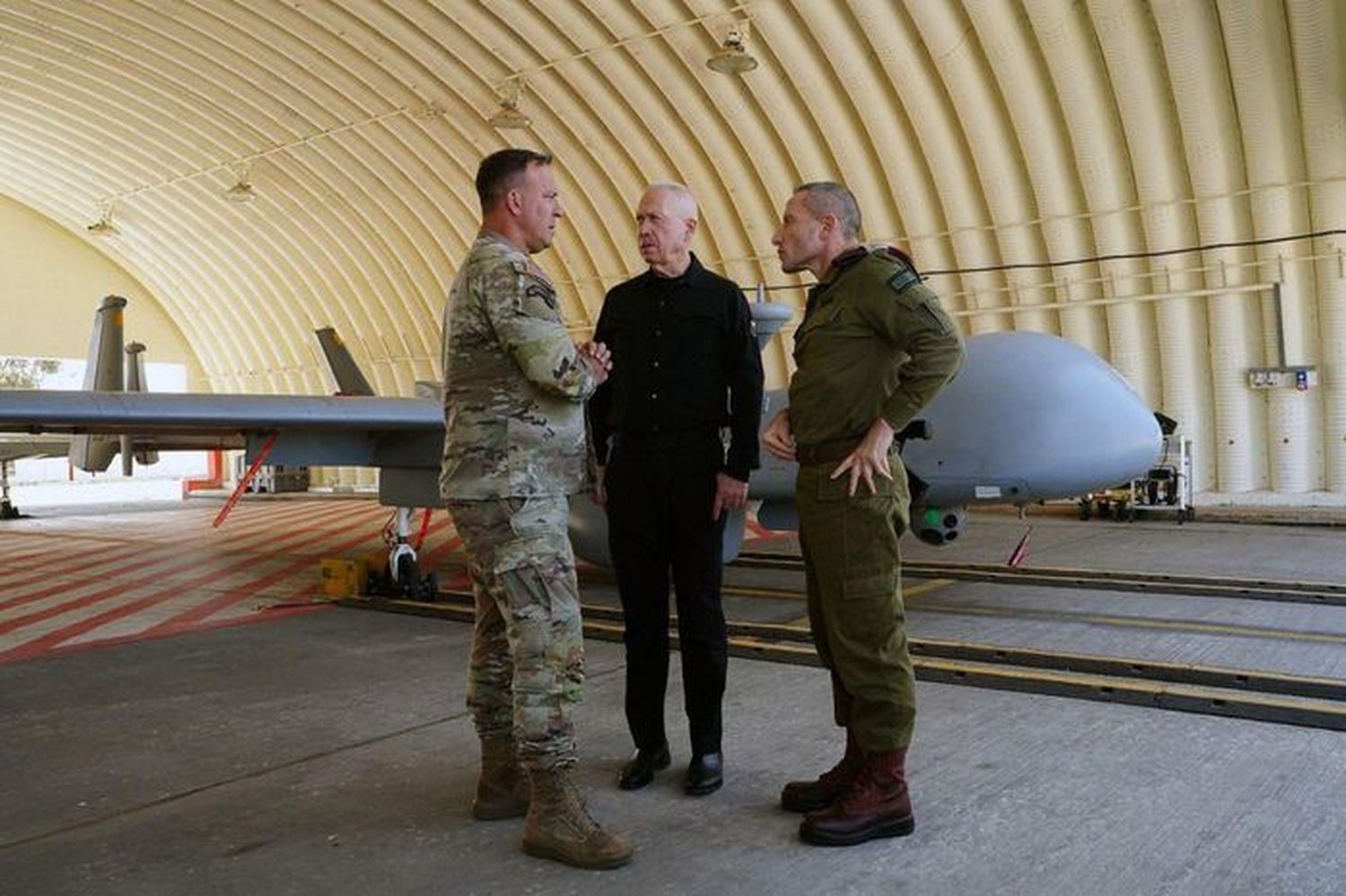Israel-Gaza War
U.S. Moves Warships to Defend Israel in Case of Iranian Attack
In a significant escalation of military readiness, the United States has repositioned its naval assets in the Middle East as tensions between Israel and Iran reach a new peak. The move comes amid credible threats of an Iranian attack on Israeli targets, following a series of confrontations that have heightened the risk of a direct conflict in the region.
The USS Dwight D. Eisenhower, an aircraft carrier, has sailed north through the Red Sea, bringing it closer to Israel, while local media reported Washington was planning to station a missile-equipped vessel close to the Israeli coast. The Eisenhower is deployed alongside a US Navy cruiser, the USS Philippine Sea, and two destroyers, the USS Gravely and the USS Mason.
This strategic deployment is a clear message of deterrence aimed at Iran, which has been warned by the Biden administration to refrain from any aggressive actions. President Joe Biden, who has been briefed multiple times a day on the escalating tensions, has expressed his administration's unwavering commitment to Israel's defense.
The repositioning of U.S. naval forces is a response to the recent uptick in hostilities, which saw Israel on high alert following reports of the U.S. monitoring "credible" threats of an Iranian attack in retaliation for a strike on Iran’s Damascus consulate. The consulate strike, which resulted in the deaths of a senior Iranian Revolutionary Guards commander and six other members, has been a flashpoint in the already strained relations between the two nations.
The U.S. military's increased presence in the region is not solely a show of support for Israel but also a precautionary measure to protect its own interests and personnel. The Pentagon has deployed additional military assets near Israel to protect it from a strike by Iran that could come as soon as this week, according to officials. The deployment of Defense Department assets to the region is aimed at deterring the conflict from widening into a larger regional war.
The USS Gerald R. Ford, the Navy's most advanced aircraft carrier, is leading the strike group, which includes a powerful air wing and a collection of warships able to launch guided missiles and engage incoming threats. The Ford carries a crew of about 5,000 and is complemented by the guided missile cruiser USS Normandy, and the guided missile destroyers USS Thomas Hudner, USS Ramage, USS Carney, and USS Roosevelt.
The U.S. has also taken steps to augment U.S. Air Force F-15, F-16, and A-10 fighter aircraft squadrons in the region. The U.S. maintains ready forces globally to further reinforce this posture. The firepower from these warships is a deterrent, but it is also to help protect the 45,000 U.S. service members and contractors that are stationed in the Middle East.
The risk of direct confrontation between the United States and Iran increased significantly following the outbreak of the Israel-Hamas war, where Iran-backed proxy forces are ramping up strikes in protest of Israel’s military incursion into Gaza, including more than 150 attacks on U.S. targets in Iraq and Syria.
Iran's supreme leader, Ayatollah Ali Khamenei, has threatened that Israel "must be punished and shall be" following the April 1 attack on the consulate building in Damascus. Israel has warned that an attack from Iranian soil would be met with a direct response against Iran, potentially triggering a major regional war.
The White House issued a stern warning regarding the ongoing threat of Iranian reprisals against Israel, with President Joe Biden receiving regular updates from his national security team. John Kirby, the National Security Council spokesperson, acknowledged the gravity of the situation, stating, "We're watching this very closely."
In addition to supporting Israel, the U.S. is also evaluating its own regional posture in anticipation of a possible Iranian retaliatory attack. "It would be imprudent if we didn't take a look at our own posture in the region to make sure that we're properly prepared," Kirby explained.
As the situation continues to develop, the international community is calling for de-escalation to prevent further bloodshed. The recent military maneuvers by the United States underscore the delicate balance of power in the Middle East and the potential for a broader conflict that could have far-reaching implications.

